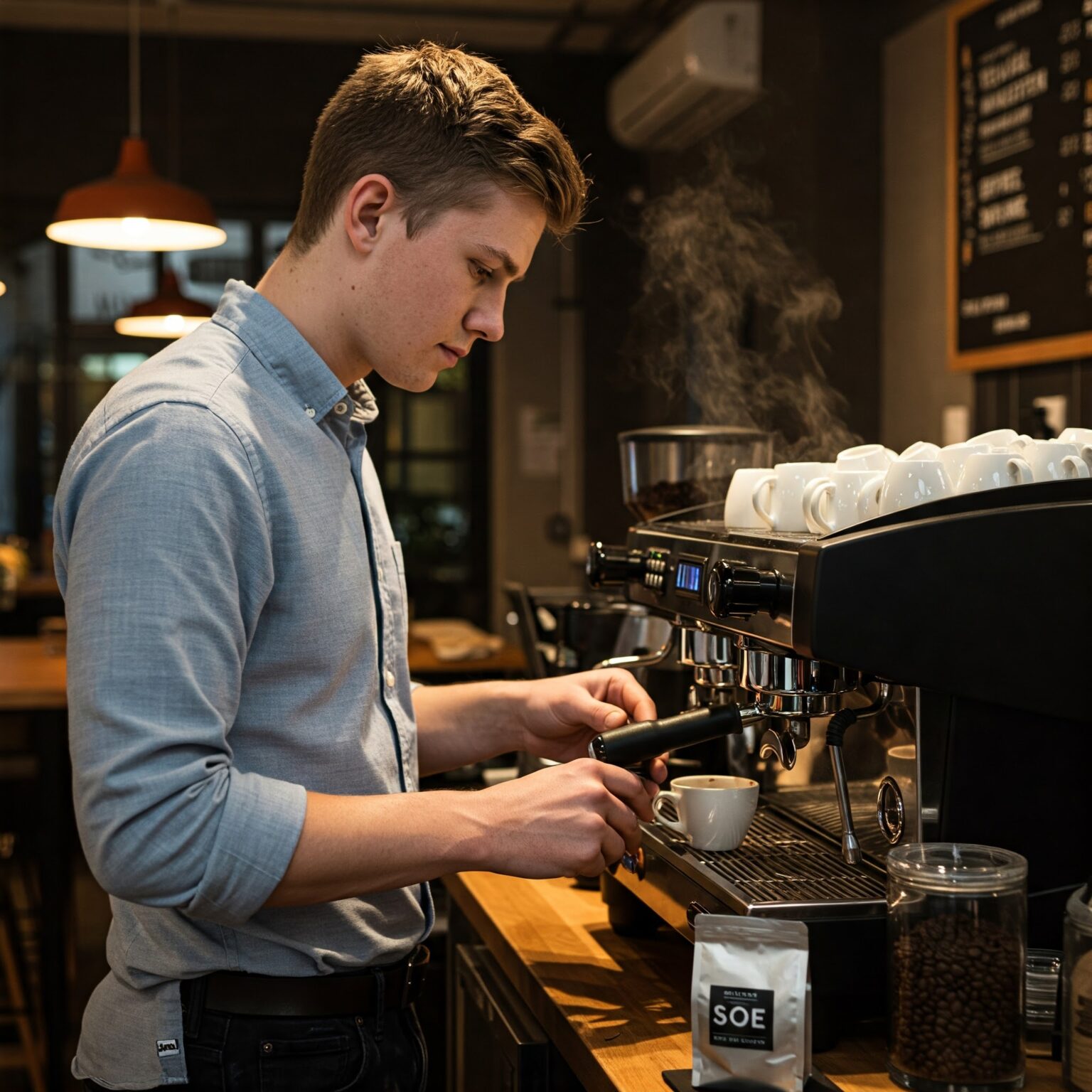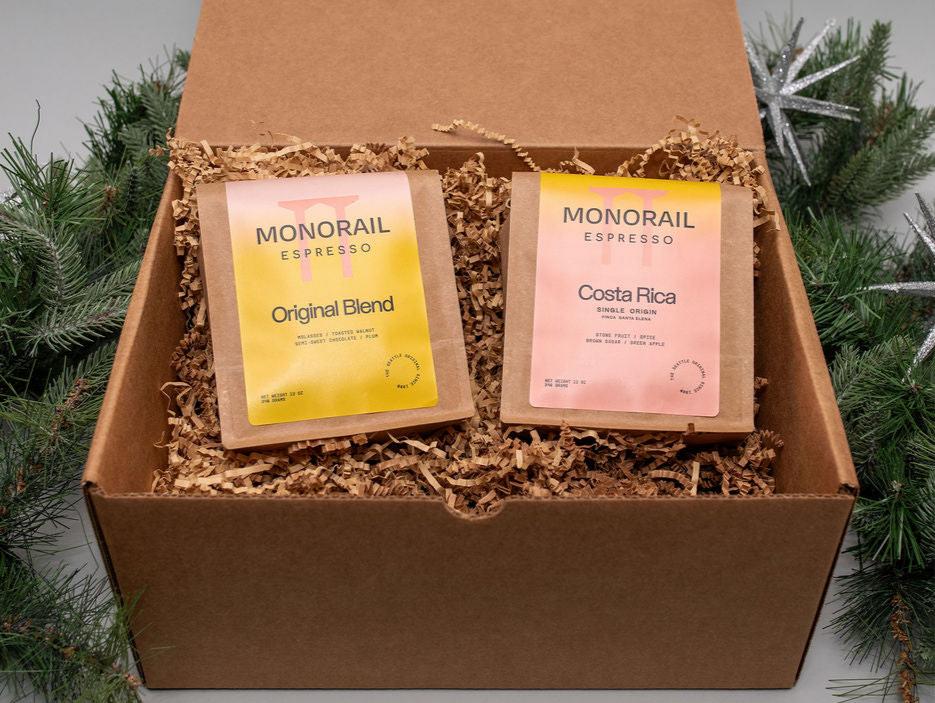Exploring the Abundant Tastes of Coffee Beans: a Deep Dive Into Coffee and Blended Coffee Beans
When you check out the abundant tastes of coffee beans, you uncover a complicated globe where each range brings its own personality to your cup. Comprehending the origins, processing methods, and roasting techniques can change your coffee experience. As you browse with the art of espresso and the imagination behind mixed coffees, you'll begin to appreciate the nuances that make each sip one-of-a-kind. What you'll find next might change the way you appreciate your morning mixture.
The Beginnings of Coffee Beans: Checking Out Terroir and Flavor Profiles
When you take a sip of coffee, you're not simply enjoying a beverage; you're experiencing an abundant tapestry of tastes shaped by the beans' beginnings. Each region generates special flavor accounts influenced by climate, elevation, and soil. Beans from Ethiopia often break with brilliant, fruity notes, while those from Colombia tend to supply a balanced, nutty sweet taste.
As you explore various origins, you'll observe how terroir-- the environmental factors affecting a plant-- plays a vital function - Single Origin Espresso. The very same coffee variety can taste significantly various relying on where it's grown
When you think about these variables, you start to appreciate the complexity behind your mug. Each sip informs a story of the land and the farmers who nurtured the beans. So, following time you delight, consider the trip your coffee took before it reached your hands, and enjoy those detailed flavors that show its origin.
Recognizing Coffee: The Art and Scientific Research Behind the Mixture
When you consider coffee, it's not practically the solid flavor; it's also about the strategies that bring it to life. Understanding exactly how different preparation techniques effect taste can transform your brewing experience. Let's check out the intricacies of espresso preparation and reveal the one-of-a-kind taste accounts that make each cup special.
Coffee Prep Work Methods
Espresso preparation is both a scientific research and an art, incorporating exact methods with a deep understanding of coffee. To start, you'll intend to select top quality, freshly baked beans and grind them carefully for optimal extraction (Single Origin Espresso). The work dimension is important; too crude, and your coffee will certainly be weak, too great, and it'll be bitter
Following, tamp the grounds equally in the portafilter to ensure uniform removal. When you lock it into the maker, go for a developing temperature in between 190 ° F and 205 °
F.As you pull the shot, expect the excellent extraction time-- around 25-30 seconds. The outcome ought to be an abundant, velvety espresso with a stunning layer of crema on top. With technique, you'll understand these strategies.
Flavor Accounts Discussed
The globe of espresso uses a rich tapestry of flavor profiles that can boost your coffee experience. You'll notice a balance of level of acidity, anger, and sweetness when you take that very first sip. Each coffee bean carries unique notes, from floral and fruity to nutty and chocolaty. Light roasts typically showcase intense level of acidity and lively flavors, while dark roasts present deeper, bolder tones.
A well-crafted blend might harmonize the bright notes of an Ethiopian bean with the abundant, chocolatey touches of a Brazilian bean. Accept the journey of discovering coffee's varied tastes, and you'll transform your coffee routine right into an amazing journey.
Processing Techniques: Exactly How They Influence Taste and Aroma
While it could appear that the origin of coffee beans is the most substantial aspect in identifying their taste and scent, the processing approaches used post-harvest play a similarly vital role. You'll locate that these techniques can drastically change the final taste profile of your mug.
As an example, the washed process removes the fruit from the beans prior to fermentation, usually bring about a cleaner, brighter taste. The natural procedure leaves the fruit intact throughout drying out, resulting in a sweeter, fruitier profile.
Other techniques, like honey processing, strike a balance, enabling some fruit mucilage to stay, offering an unique intricacy.
Each handling method engages with the beans' inherent attributes, boosting or muting particular flavors and fragrances. So, when you drink that coffee or combined coffee, keep in mind that the trip from cherry to cup is affected not simply by origin however also by just how those beans were refined.
Roasting Strategies: Unlocking the Full Possible of Coffee Beans
Roasting techniques are crucial for revealing the full possibility of coffee beans, as they change raw, green beans right into the aromatic, tasty coffee you appreciate. The choice of roasting technique-- light, tool, or dark-- significantly affects taste accounts. Light roasts maintain the beans' all-natural acidity and fruity notes, while medium roasts balance sweet taste and splendor. Dark roasts, on the various other hand, stress vibrant, great smoky tastes.
A slower roast at lower temperature levels permits for complicated flavors to create, while a quicker roast can escalate resentment. By grasping these techniques, you'll disclose a globe of taste, boosting your coffee experience to brand-new heights.
The Magic of Blended Coffee: Creating Distinct Flavor Experiences
Developing an one-of-a-kind taste experience with blended coffee can transform your early morning ritual into an expedition of preference. By incorporating various beans from numerous regions, you can reveal a symphony of tastes that elevate your mug to brand-new elevations. Each mix offers an unique account, stabilizing sweetness, body, and level of acidity to create something absolutely special.
When you choose a mix, you're not just choosing a coffee; you're selecting a journey throughout diverse landscapes and cultures. Try out different mixes allows you to find your individual favorites, whether you enjoy fruity notes or rich, chocolatey touches.

Sampling Notes: Recognizing the Nuances in Your Cup
As you drink your coffee, you could notice a spectrum of tastes dancing on your taste, each revealing the details of the beans. You may taste the brilliant level of acidity evocative citrus or the deep, abundant notes comparable to dark delicious chocolate. The sweet taste can stimulate honey or sugar, balancing the overall profile magnificently.
Pay focus to the body of the coffee-- does it really feel ventilated and light, or is it complete and luscious? The surface, too, provides hints; a remaining aftertaste might mean nuttiness or flower touches.

Do not fail to remember to explore the unique qualities of various beginnings, as each region presents distinct tastes - Single Origin Espresso. Ethiopian coffees often existing fruity notes, while Colombian beans might showcase a more rounded sweet taste. By recognizing these nuances, you'll grow your gratitude for each and every mug, raising your coffee experience to new heights

Developing Approaches: Maximizing Flavor Extraction for Every Bean
When you explore the different developing methods, you'll uncover that each strategy can dramatically impact the taste account of your coffee. From French press to pour-over, each method essences different substances, improving or silencing particular notes. Utilizing a French press allows oils to stay in the brew, producing a richer taste, while pour-over highlights clarity and brightness.
Temperature level and grind size likewise play important functions. A coarser work functions best for cold brews, while a fine work is ideal for espresso. Exploring with water temperature level-- in between 195 ° F and 205 ° F-- can reveal concealed flavors, too.
Don't ignore soaking time; a fast extraction can result in sour notes, while over-extraction may generate anger. By adjusting these variables, you can maximize flavor removal and really raise your coffee experience. Take pleasure in the journey of finding what technique ideal matches your taste buds!
Often Asked Concerns
What Is the Perfect Water Temperature Level for Brewing Coffee?
The excellent water temperature for developing coffee's in between 195 ° F and 205 ° F. If you utilize water that's too warm, you'll over-extract tastes; too cold, and you will not extract enough. Go for that wonderful area for the very best brew!
Just How Does Work Size Affect Coffee Flavor?
Work dimension substantially influences coffee taste. Finer grinds essence much more oils and flavors, causing a bolder preference, while coarser grinds return Single Origin Espresso a lighter flavor. Adjusting work dimension assists you achieve your wanted coffee account.
Are There Health And Wellness Perks Associated With Drinking Coffee?

What Is the Difference In Between Arabica and Robusta Beans?
Arabica beans are smoother and sweeter, frequently including fruity flavors, while robusta beans are stronger with a bitter preference and higher high levels of caffeine material. You'll observe these distinctions in scent and brewing experience.
Just How Can I Shop Coffee Beans for Freshness?
To save coffee beans for quality, keep them in a closed container, away from warm, dampness, and light. You'll maintain their taste longer if you just grind what you need right before brewing.
Exploring the Abundant Tastes of Coffee Beans: a Deep Dive Into Coffee and Blended Coffee Beans.
When you discover the rich tastes of coffee beans, you discover an intricate world where each range brings its very own personality to your mug.When you take a sip of coffee, you're not just enjoying a beverage; you're experiencing a rich tapestry of flavors formed by the beans' origins.Roasting strategies are important for revealing the full possibility of coffee beans, as they transform raw, eco-friendly beans into the aromatic, tasty coffee you appreciate.As you drink your coffee, you might discover a spectrum of flavors dancing on your taste buds, each disclosing the intricacies of the beans.